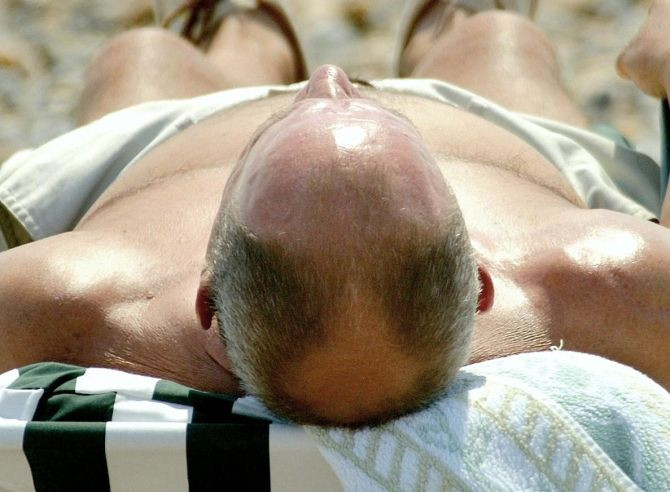An Effective Cure for Baldness May Soon Be On the Market

Male-pattern baldness may be triggered by a protein in the scalp that stops hairs from growing, according to a new study, raising the possibility that drugs that are currently being tested to block the protein might also prevent the most common cause of hair loss in men.
The study “is likely to lead to new hair growth products based on prostaglandin biology,” Anthony Oro, an epithelial biologist at Stanford University, who was not involved in the study told Nature.
Male pattern baldness, which causes hair follicles to shrink and produce microscopic hairs that grow for a shorten time than normal hairs, affects 80 percent of men at some point in their lives, and currently
Researchers found three times greater amounts of a lipid compound called prostaglandin D2 (PGD2) in the bald scalps of men with male pattern baldness compared to the haired scalp portions, and when the PGD2 protein was added to cultured hair follicles, the hair grew significantly shorter while the PGD2's derivative, 15-dPGJ2, completely stopped hair growth.
Besides experimenting on cultured human follicles, investigators also found that follicles began decreasing and hair growth was inhibited when PGD2 expression peaks in mice, and PGD2-treated mice also had hair growth inhibited.
"Although a different prostaglandin was known to increase hair growth, our findings were unexpected, as prostaglandins haven't been thought about in relation to hair loss, yet it made sense that there was an inhibitor of hair growth, based on our earlier work looking at hair follicle stem cells," senior author Professor George Cotsarelis of the University of Pennsylvania said in a statement released on Wednesday.
Researchers said that the latest findings supported previous studies demonstrating stem cells that create hair were still intact in bald men and that while hair follicles were also still intact, they had appeared smaller and produced thinner and shorter hair, and as time goes on hairs became so short that they no longer protrude beyond the surface of the skin.
Porducts like Johnson & Johnson’s Rogaine, or finasteride originally prescribed for prostate enlargement, and Merck’s Propecia, based off of minoxidil which was developed to treat hypertension, slow the process of hair loss, and some users see slight hair growth, researchers said.
However Cotsarelis believes that men may be able to regrow all their hair is the inhibiting protein is removed.
“We really do think if you remove the inhibition, you get longer hair,” Cotsarelis told Bloomberg, but he added that he didn’t know whether the follicles would return to their former lengths.
Researchers believe that a new hair loss treatment could be like a lotion or potion that would be applied topically to inhibit the GPR44 receptor.
While the new findings may be applied to men, researchers are also still unsure whether the findings can be applied to female pattern hair loss, which affects around 30 million women in the United States.
Bloomberg reported that while Merck, which is currently in final phase testing of laropiprant as a flushing inhibitor to be administered with niacin, isn’t studying its drug for treating hair loss, Ian McConnell, a spokesperson for the company, told the reporters that the company hasn’t seen any signals in patient trials that they therapy might reduce baldness.
Switzerland-based Actelion is also in final phase testing of its setipiprant for treating allergic inflammation of nasal pathways which could also prove to reduce hair loss.
However, previously Allergan’s Latisse, which was an artificial version of prostaglandin F2-alpha that was originally developed for glaucoma, was discovered later to make eyelashes grow, Paradi Mirmirani, a dermatologist at Kaiser Permanente in Vallejo, California, told Bloomberg.
“They could pick out who was on it from the waiting room because of the super-long eyelashes,” Mirmirani said.



























